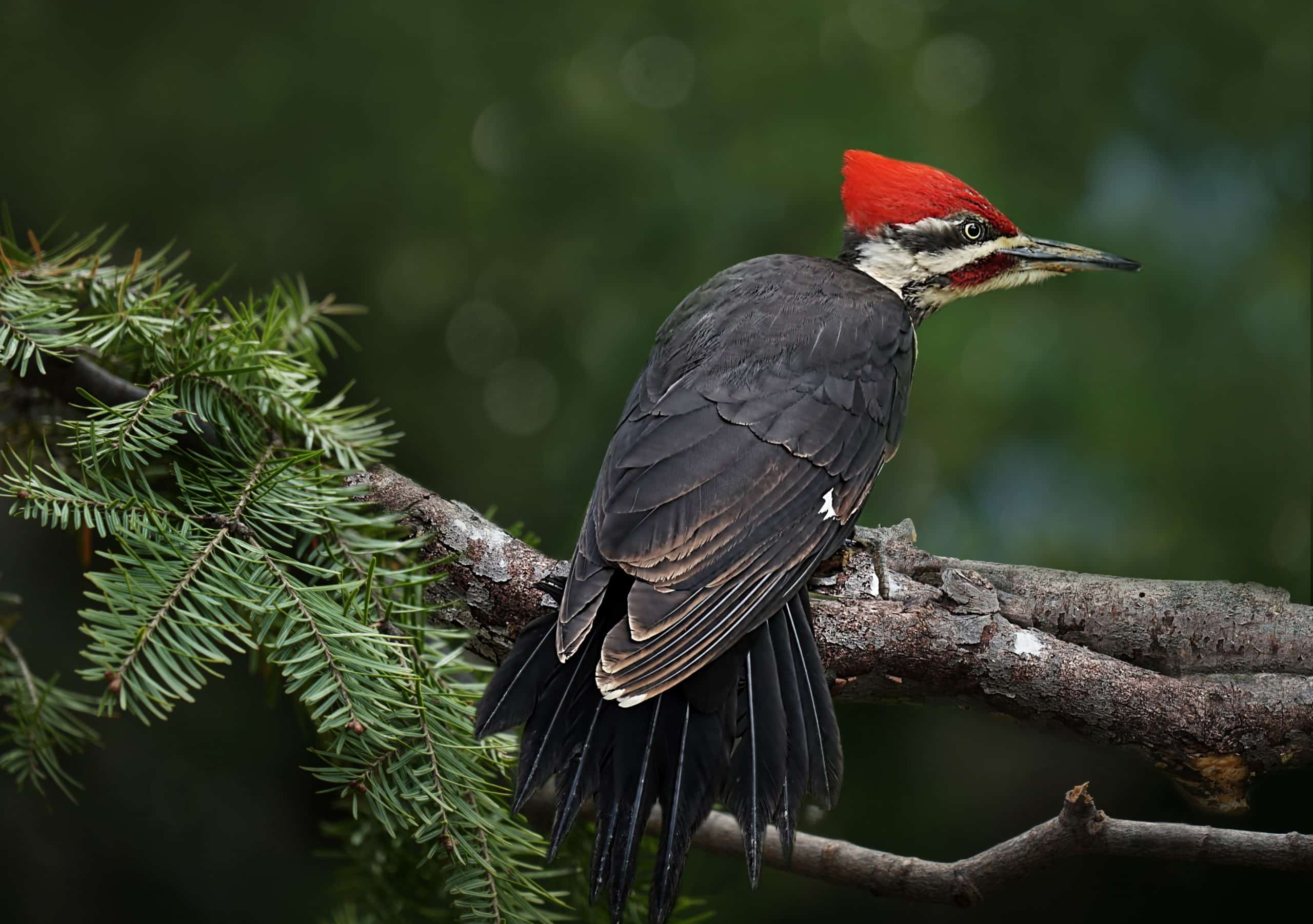Recognizing Woodpeckers in Florida: Habits, Variety, and Environments
Wiki Article
Woodpeckers Unleashed: Checking Out the Marvels of These Skilled Tree Mountain Climbers
Woodpeckers, with their distinctive markings and balanced drumming echoing with wooded locations, hold a distinct location in the bird world - Woodpeckers in Florida. As we dive into the complex information of woodpeckers' nesting habits, feeding strategies, and the ongoing preservation initiatives to protect these exceptional birds, a much deeper admiration for their area in nature unfolds.Anatomy and Adaptations
When analyzing the anatomy and adaptations of woodpeckers, one can observe remarkable features that enable these birds to thrive in their specialized eco-friendly particular niche. In addition, woodpeckers have zygodactyl feet, with 2 toes dealing with ahead and two encountering in reverse, supplying a company hold on tree trunks while they search for food or drum for interaction.In addition, woodpeckers have a special tongue structure that is long, barbed, and sticky, enabling them to remove pests from gaps in wood. This customized adaptation allows woodpeckers to exploit a food resource that is unattainable to many various other bird species. In general, the anatomy and adjustments of woodpeckers showcase the impressive evolutionary solutions that have actually permitted these birds to flourish in their arboreal environment.
Drumming Habits
Having checked out the composition and adjustments of woodpeckers, the focus currently moves to understanding their drumming habits, a distinctive facet of their communication and territorial display screens. Drumming is an important kind of interaction among woodpeckers, offering multiple functions such as establishing areas, drawing in mates, and signaling alarm system. Each woodpecker varieties has a special drumming pattern that helps individuals acknowledge members of their very own varieties and differentiate them from rivals or killers.Woodpeckers produce drumming audios by rapidly pecking on resonant surfaces such as dead trees, energy posts, and even steel objects, producing a collection of rhythmic beats. The intensity and rate of drumming can differ based upon the purpose; for example, a quick drumming sequence might indicate hostility in the direction of burglars, while a slower and softer drumming pattern can indicate courtship (Woodpeckers in Florida). Furthermore, woodpeckers might adjust the frequency and duration of their drumming to share specific messages successfully
Nesting Behaviors
Exploring the nesting practices of woodpeckers exposes remarkable insights into their reproductive behaviors and habitat options. Woodpeckers are understood for their unique nesting preferences, commonly digging deep into dental caries in trees to create sheltered spaces for raising their young. These tooth cavities serve not only as a nesting site however likewise as a safe haven from killers and stormy weather.Woodpeckers exhibit a high level of fidelity to their nesting sites, typically returning to the exact same place time after time. This behavior highlights the significance of suitable habitat availability for their reproductive success. The selection of a nesting website is crucial for woodpeckers, see this website with factors such as tree species, elevation, and degeneration phase playing significant functions in their decision-making process.
Interestingly, some woodpecker species are recognized to dig deep into several tooth cavities within their territory, providing themselves with alternative nesting alternatives. This method may work as a form of insurance policy versus prospective risks or disruptions to their main nesting site.

Feeding Techniques
Woodpeckers employ a range of specialized feeding strategies to procure their main food resources. Among the most unique feeding actions of woodpeckers is drumming, which entails rapid pecking on trees to discover bugs underneath the bark. This drumming not only helps them find victim yet additionally acts as a means of communication with other woodpeckers. Woodpeckers have solid, chisel-like beaks that enable them to pierce right into wood effortlessly. When an opening is developed, they utilize their lengthy, barbed tongues to remove insects such as ants, beetles, larvae, and spiders. These tongues are coated with sticky saliva that helps trap the prey. Woodpeckers are also known to excavate tooth cavities in trees to gain access to concealed insect larvae or sap. Some types, like the acorn woodpecker, shop nuts in particularly created holes called granaries. This tactical keeping of food helps them survive throughout food scarcity periods. Woodpeckers are truly remarkable in their feeding techniques, showcasing flexibility and knowledge in obtaining their nourishment.Conservation Efforts
In the middle of the intricate feeding techniques displayed by woodpeckers, the conservation initiatives focused on safeguarding these remarkable birds play an essential duty in maintaining their habitats and populations. go to website Woodpeckers encounter different risks to their survival, consisting of habitat loss as a result of deforestation, climate adjustment modifying their ecological communities, and accidents with man-made frameworks such as buildings and vehicles - Woodpeckers in Florida. Preservationists Read Full Report are actively functioning to attend to these challenges and make certain the long-term health of woodpecker varieties
Education and learning and public understanding campaigns are additionally crucial components of woodpecker conservation initiatives. By increasing awareness concerning the value of these birds in maintaining healthy and balanced woodland ecosystems, conservationists can gather assistance for habitat conservation efforts and advertise accountable land administration techniques. With collective efforts in between researchers, policymakers, and neighborhood neighborhoods, we can function together to safeguard a future where woodpeckers prosper in their natural environments.
Conclusion

Report this wiki page